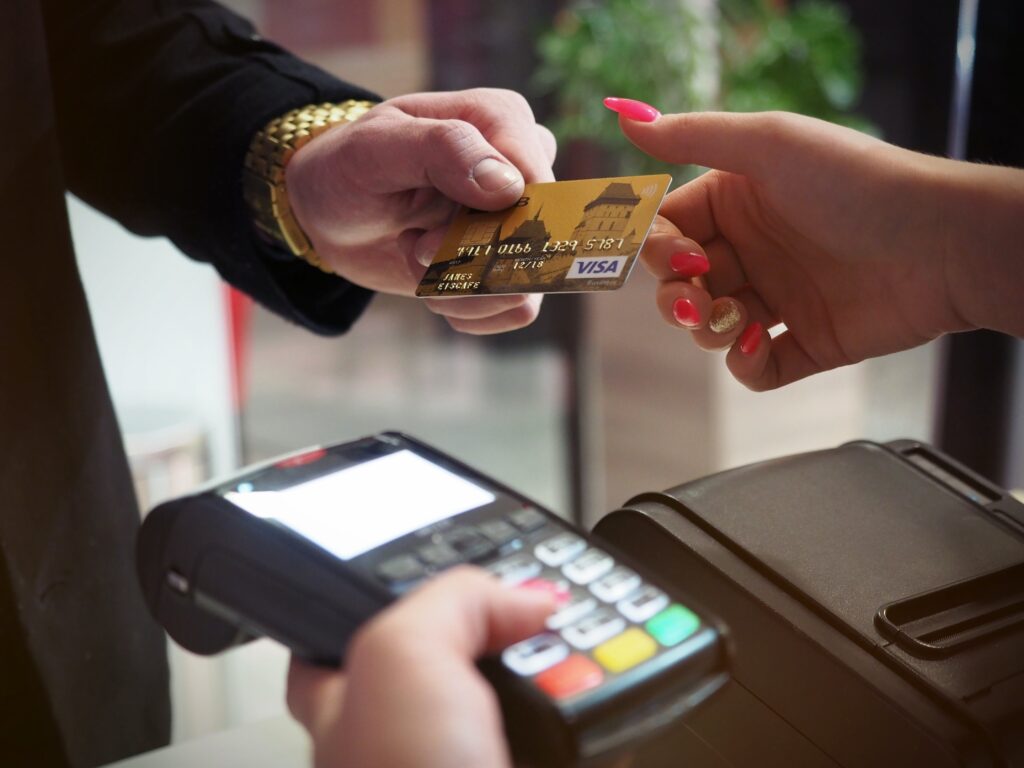Future-Proof Your Amazon Business With These Top Trends of 2024
Looking for the Next Big Thing in Ecommerce? Here Are 10 Must-Know Innovations Primed to Move the Bar for Amazon Sellers in 2024

Over the last few years, Zoom calls, online school, and virtual fitness classes were a mostly unwelcome part of our lives. Now that we’ve mostly transitioned away from that anxious lifestyle, numerous business owners may be curious about what lies ahead for online shopping, and the overall ecommerce landscape.
That’s why the Canopy Management team wanted to take a deeper dive into 10 important ecommerce trends that stand a very good chance of impacting how you will run your business in the coming 12 months.
It’s probably not a surprise, but the first one has to do with artificial intelligence.

1. Augmented Reality is Changing Shopping Online
Augmented reality (AR) technology enables consumers to “visualize” the product they’re considering purchasing without leaving their house. It’s significantly revolutionized the shopping journey in various sectors, including fashion, beauty, and home decoration.
Where virtual reality completely replaces your world with a virtual one, Augmented reality can add or superimpose digital facets on top of the real world.
Companies such as Nike, Home Depot, Target, and IKEA have begun to use virtual features to help boost their ecommerce sales. These features utilize both AI and AR technology. As a result, the shopping experience can be more like playing a video game than visiting a physical store.
Don’t like the idea of balancing awkwardly on one leg in a tiny changing room? Snapchat users can now try on clothing and accessories virtually with online shopping technology that responds to your own specific physical dimensions.
As Amazon continues to upgrade its Premium A+ content, how long will it be before Amazon takes the next big step and optimizes its platform for augmented reality?
Thinking About Hiring an Amazon Management Agency?
Canopy’s Partners Achieve an Average 84% Profit Increase!
Let’s talkWhat’s Next for Augmented Shopping?
As virtual try-on and 3D product visualization tech gains traction on ecommerce platforms, few companies seem better positioned than Amazon to lead next wave innovation.
With extensive real-world product imaging data, proprietary display partnerships, and relentless customer convenience focus – Amazon could soon blend augmented reality into elevated shopping experiences spanning discovery to delivery.

2. Voice Search is Speaking to Buyers
Voice Search, using “speech” to search questions or give commands on the internet has exploded in the last few years. The rapid growth has been fueled by the advances in artificial intelligence and machine learning.
For example, Google search stats show that in 2013, its AI could recognize 77% of spoken words. Today, that figure is 97%.
That’s not only made the platform more intuitive for users, it’s also exponentially increased the value and marketability of voice search for advertisers.
According to eMarketer, last year over 40% of shoppers took advantage of voice search. With over 70% of respondents preferring voice-based queries over typed, the future seems clear.
The Voice Search Platform Will Continue to Grow in 2024
As artificial intelligence continues advancing conversational interfaces and speech recognition, voice-first search will increase across all forms of commerce. With nearly half of shoppers now utilizing voice commands for discovery and Google reaching near human-level comprehension, the platform has become indispensably intuitive.
Brands able to blend SEO fundamentals with conversational tone and personality will build valuable connections with shoppers engaging voice assistants daily.
In many ways, the search queries of today are going to shape content visibility tomorrow.

3. Personalized Shopping Through AI
The constant improvements to AI and machine learning have also been behind the rise of automated, personalized shopping experiences.
This exciting (if occasionally troubling) technology has made it possible to continuously collect data about the way customers interact with websites or platforms. And of course, customer loyalty is at stake.
How the customer shops, what they buy, and how and when they make their purchases are all collected and made visible to the marketers. It’s really a hallmark of this technology that’s simply not possible when shopping in a brick and mortar store.
For example, the Brinks Home Security company has generated a huge amount of historical customer-level transaction data. Brinks wanted to find a way to use this information to drive growth. In just 24 months Brinks was able to increase their rate of A/B testing from a few tests a day to over 50,000 by taking advantage of AI-driven daily tests.
This ability to personalize customer touchpoints helped them to double their sales figures in just six months.
Where Marketing Personalization Goes Next
While current personalization efforts leverage prior purchase patterns, the next phase will see AI predict needs that buyers might not have realized were there.
AI-driven product recommendations can be based on subconscious hints in browsing behavior, likes and surveys. In a sense, the advances in technology can limit exploration, but conversely are also able to increase the potential of many forms of parallel product discovery.

4. Mobile Devices are Fueling Social Commerce
Smartphones have transformed buying behaviors by providing nonstop recreational browsing on demand. With millions now turning to social feeds for entertainment and discovery, mobile platforms quickly seized the opportunity to merge shopping inspiration into digestible content people immerse in daily.
Intuitive tools that quickly connect the dots between interest and transaction have emerged. Clever videos and influencer endorsements now nudge users shopping with mobile devices from intrigue to an online store checkout in seconds.
Smartphone-centric consumption that’s built on instant gratification can open new opportunities for brands by packaging the compulsively shareable recommendations of legions of influencers.
Social Commerce is Changing How We Shop Online
The continual advances in artificial intelligence and big data have helped accelerate the use of Live selling and other strategies on a number of social platforms.
That’s why social commerce has become a big buzzword for 2024.
With livestream selling, a host demonstrates a product in a live online video either through a social media platform, or direct video calls with groups of customers.
In addition to prospective customers being able to “shop” (watch the feed) from wherever they want, with live commerce, they can interact with the personalities in real time, and seek the answers to any questions they might have. Then, they can make their purchase directly from the live stream shopping platform. Last year, TikTok announced a new partnership to assist US merchants with advertising on the app, giving them access to core functions of the TikTok For Business Ads Manager without requiring them to leave their own business platform.

5. More Payment Options for 2023
In 2022, 49% of total ecommerce purchases were made with digital and mobile wallets. Although traditional payment methods continue to be very popular, ecommerce shoppers are constantly marketed to with new customized experiences to choose from.
That’s why for ecommerce business owners, flexible point of sale payment methods are on the upswing. Everything from credit card payments, digital wallets, direct debits, and flexible payment plans are changing the way online sellers and entrepreneurs can get paid.
McKinsey’s POS Financing Survey, shows that approximately 60% of US consumers say they are likely to use POS financing over the next 12 months. Buy Now, Pay Later (BNPL) is an increasingly popular type of short-term financing that allows consumers to make purchases on an ecommerce site, and pay for them incrementally, at a future date, and often interest-free.
There is steady momentum in the direction of a “super app,” similar to large China-based platforms. Apps such as China’s AliPay, India’s Paytm, Singapore’s Grab, Indonesia’s GoTo, Vietnam’s Zalo, and South Korea’s Kakao are combining shopping, payments, financing, together with banking products. Along with the rise of social commerce, that has helped make smartphones the nexus of social media and communication, but every aspect of a person’s life.
Smartphones are Driving Ecommerce Trends
In the third quarter of 2023, smartphones made up 74 percent of retail site visits in the United States and generated 63 percent of online shopping orders.
That increase in smartphone usage is going to be a big lever driving change for sellers, buyers, and Amazon in 2024.
Importantly, Amazon is in a great position to roll out the next integrated innovation revolutionizing mobile experience. It makes sense that the platform with the most customer touchpoints might win by default when convenience becomes currency.

6. Keep the Sales Coming with Subscription Services
A new report from PipeCandy and Rodeo predicts that as many as 75% of DTC brands will have a subscription-based offering by 2023. It makes perfect sense. Once you’ve captured a single sale, why not streamline the process for yourself AND the buyer?
Subscription programs are more convenient for buyers and save time. They’re also a great way for sellers to plan for inventory and sales. With “committed” sales already in the pipeline, a portion of your inventory forecasting becomes much easier.
And, of course, Amazon has been paying attention!
With Amazon’s popular Subscribe and Save, sellers enjoy free standard shipping on auto-deliveries and the option to schedule deliveries on a specific Subscribe & Save delivery day. Eligible products often come at a discounted price on the Amazon and Amazon Marketplace price.
Subscriptions Help Personalize Amazon Commerce
With more brands offering subscriptions, Amazon – and those that sell on its marketplace – are in a perfect position to take the personalization of customer preferences even further.
There’s a big opportunity for sellers to create bespoke bundles that not only make it easier – and more familiar – for customers to shop, it’s a great way to differentiate your product in what’s become a crowded marketplace.

7. Sustainability Matters
Ecommerce businesses can see that the climate is changing. Because of that, there’s a new, growing awareness that sustainability isn’t just a fashionable stance for environmentalists to take, it’s now a key consideration in consumer purchases.
According to research from Forrester, over half of U.S. consumers consider their values when making shopping choices. It seems that across multiple generations, consumers are willing to pay more for sustainable products.
Increasingly, business owners are taking a strong position on climate change. Patagonia Founder and CEO, Yvon Chouinard just gave away a 3 billion-dollar company to combat climate change and protect undeveloped land around the globe. While it’s clear that not everyone will follow such a high path, more than ever before, buyers increasingly want their purchases to mean something.
With differentiation such an important aspect of making sales on Amazon, sustainability might just be a great way to make your product stand out.
Ecommerce Businesses are Selling Sustainability on Amazon
Consumer preferences are increasingly prioritizing eco-conscious brands. Across generations, shoppers pay closer attention to business practices and supply chain impacts – and are willing to pay more for alignment with their values.
It’s no longer enough to just sell products. In 2024, merchants can win by spotlighting higher priorities.

8. Blurring the Line Between UGC and Micro Influencers
User-generated content (UGC) continues to grow in importance with 41% of US consumers claiming that they stream more user-generated content than TV shows or movies.
One of the easiest ways to do this is through influencer marketing. It’s become so prevalent that there are a number of companies such as Grin, Creator.co, Aspire, or Upfluence that are specifically designed to help entrepreneurs manage their partnerships with relevant, authentic influencers.
Often overlooked by larger, celebrity-focused brands, micro influencers blur the line between user generated content and affiliate marketing. Most importantly, they have a very high engagement with their fan-base.
Smaller, niche-aware influencers combine an established relationship AND a knowledge of a specific social media platform, product niche or area of expertise. That’s why “niche-influencers” have become an increasingly valuable component of an Amazon sellers’ marketing strategy.
Social Platforms are Democratizing Outreach
Micro-influencers navigate communities as neighbors, not just as celebrities. Their real-world relatability cuts through the marketing distance that can divide consumers and products.
Their impressions feel less manufactured, more meaningful by reflecting the lives beyond the product links. For Amazon sellers, micro-influencers blend the appeal of word-of-mouth advocacy with the accessibility of internet broadcasting.

9. Multichannel Selling is the Future
Multi-channel marketing blends multiple distribution and marketing channels in order to attract online shoppers and stand out in the marketplace. The channels might include email, direct mail, websites, social media, live streams, and/or a retail storefront.
By doing this, not only do marketers and entrepreneurs expand their reach and increase engagement, the benefits of combining two or more of these channels creates exponential benefits. This will help make sure your ecommerce store stays ahead of the competition.
Take selling on Amazon for example. Recently Amazon has reacted to the influx of ecommerce sellers away from their marketplace and towards a number of off-Amazon platforms. According to many expert Amazon sellers, Amazon’s algorithm is now adjusting all-important rankings upwards for sellers with a substantial off-Amazon presence.
Additionally, For sellers enrolled in Amazon Brand Registry and selling in Amazon’s US store, Amazon has rolled out a bonus for sales generated from non-Amazon marketing efforts.
Amazon’s Brand Referral Bonus is an opportunity to earn, on average, a 10% bonus of the sales price on sales generated from sales originating OFF of Amazon.
Go Beyond Amazon for Ecommerce Sales
As changes to the Amazon ecosystem, from its algorithm, to supply chain become increasingly difficult to anticipate, a lot of brands don’t want to risk single platform dependency – especially on a volatile marketplace like Amazon.
By diversifying channels, ecommerce sellers are better able to boost their Amazon position rank through increased brand recognition and sales velocity.
At the same time, every new sales channel compounds the overall exposure of your brand.

10. Zero-Party Data for the Win
Marketers know that to increase conversions, understanding a customer’s motivations and actions is where you need to start. For a long time, that has happened through the collection of third-party data.
When Apple rolled out its IOS 14 update limiting easy access to third-party data it sent ripples throughout the ecommerce marketing and media buying community. Earlier this year, Google announced its own privacy restrictions that will cut tracking across apps on its Android devices.
That’s why when it comes to digital marketing, sellers are going to have to be more proactive in gathering customer data through a variety of practices. Increasingly, marketers are dependent on what’s referred to as zero-party data.
Zero-party data is information from customers that they voluntarily and deliberately share with you. Essentially, zero-party data has been volunteered. You can source zero-party data from quizzes, pop ups, surveys, social media polls, product onboarding, contests, and account creation.
Sure, it’s different than we’re used to and involves a few more steps, but as with most things requiring a little extra effort, it’s worth it. It’s also a process that will separate those sellers truly determined to succeed from the rest.
The Future of Opt-In Loyalty and Customer Data
As external data access vanishes behind walls of privacy concerns, sustainable growth relies on opt-in relationships directly capturing zero-party intelligence.
Surveys, questionnaires and interactive content can help quench a thirst for personalization with visitors revealing preferences willingly. In a way, it allows the seller to blend machine learning with invaluable human interaction.
This volunteering of information increases visibility and allows Amazon sellers to align to clear motivations rather than assumptions. Ultimately, this is the kind of consent that fuels conversion.
Can’t Keep Up? Leave the Trendspotting to Canopy Management
With new changes hitting the world of ecommerce almost weekly, it can be hard to expect your team to keep up and still manage the day to day of running a business.
To get help with developing a comprehensive strategy that keeps your brand on top of the latest changes, click here to talk to one of our ecommerce specialists today!



